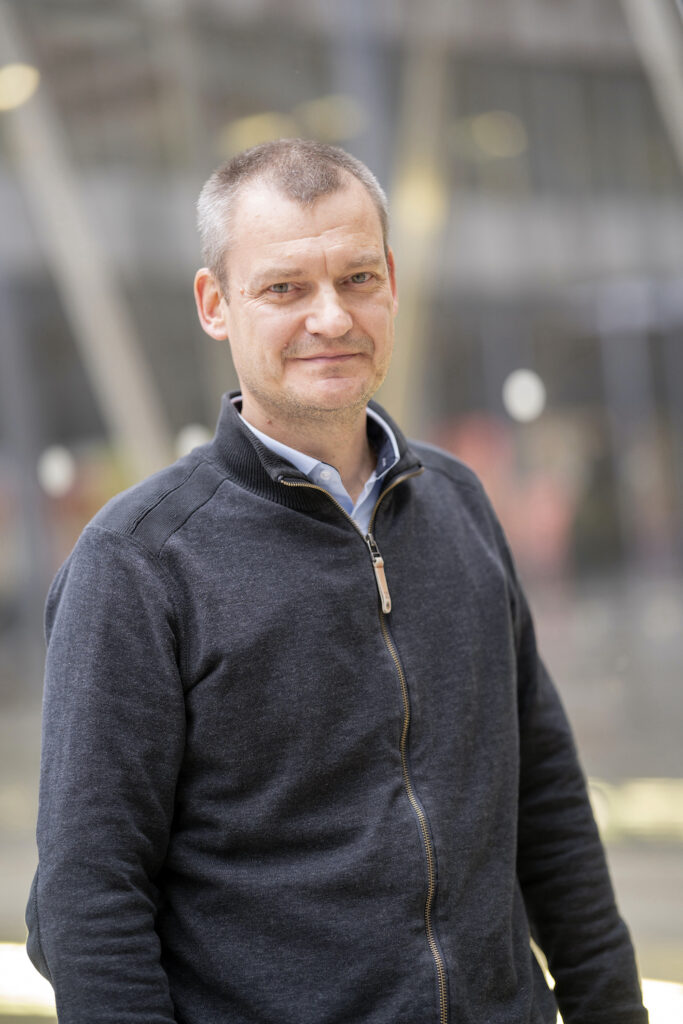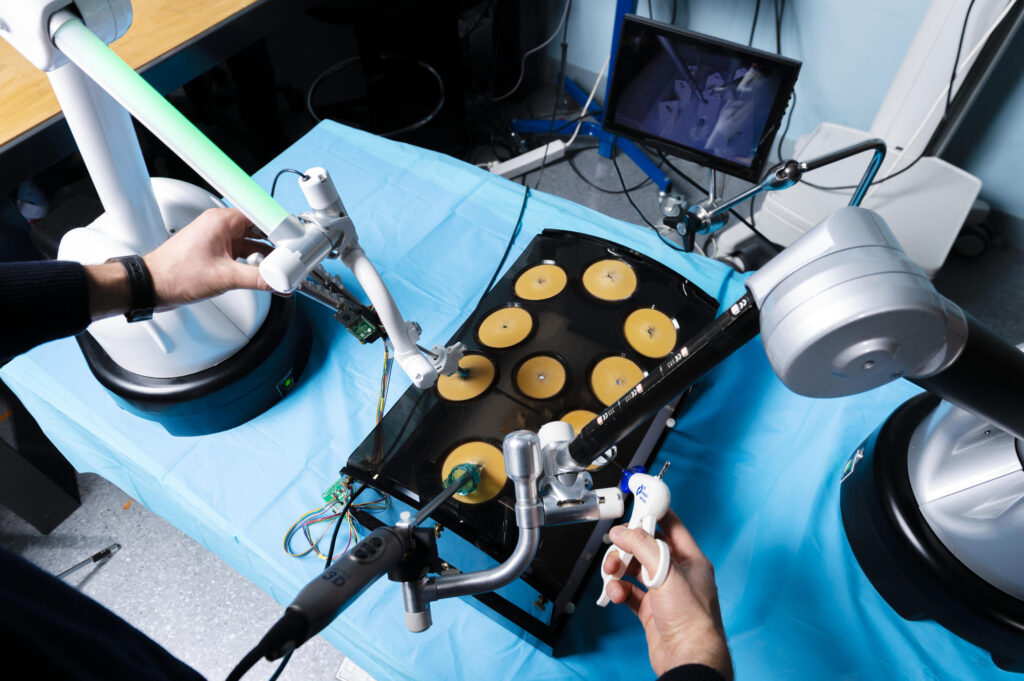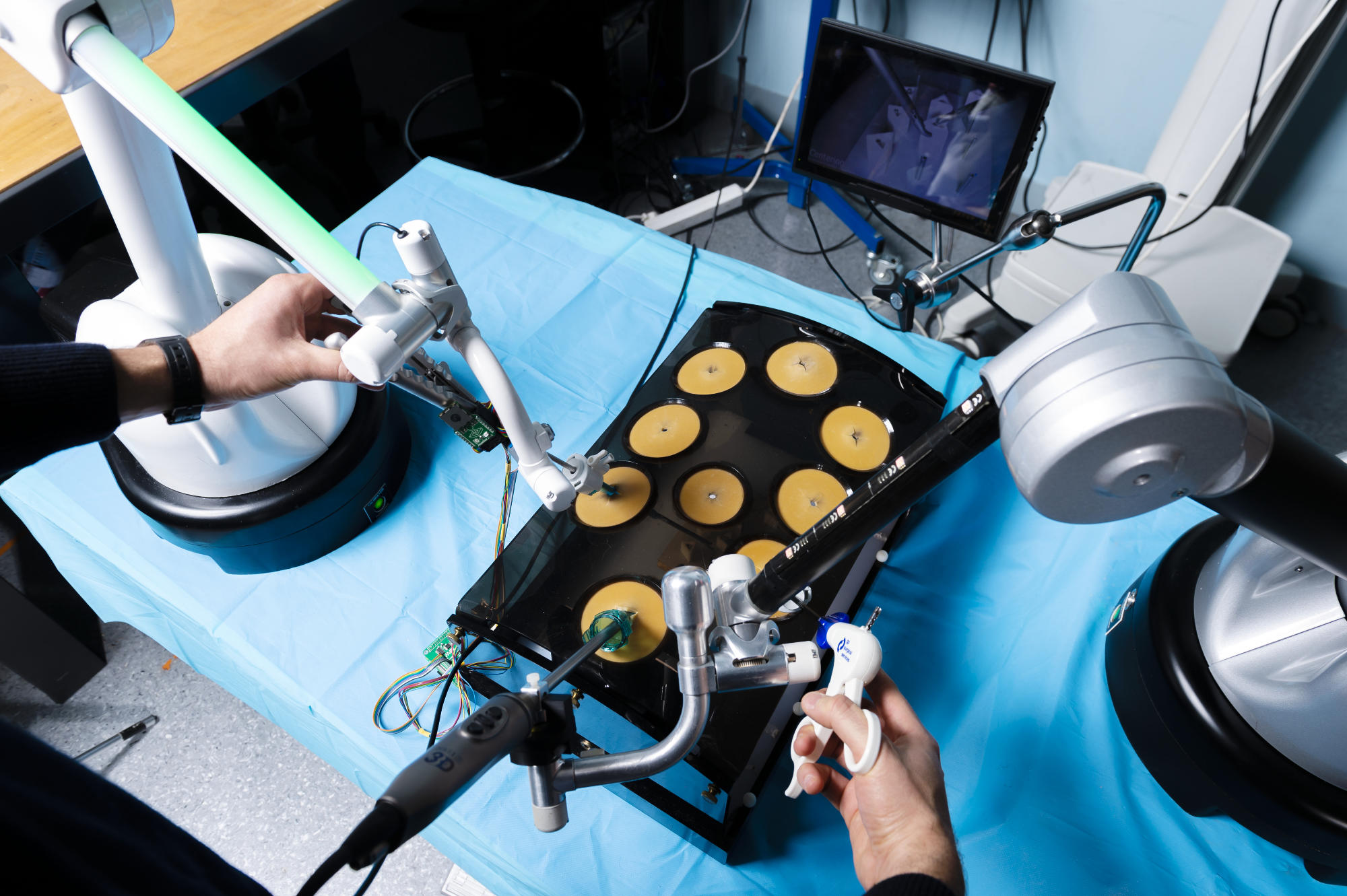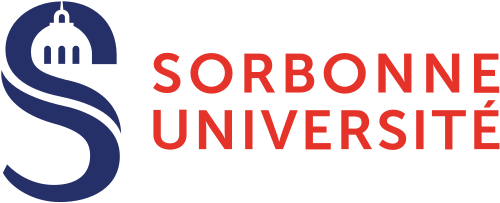Operating with greater precision, reducing convalescence times and facilitating the work of surgeons: this is the goal of surgical robotics, a field where innovations are constant. The surgical cockpit developed by the ISIR at Sorbonne University is a good example.
Medical robotics has its figurehead, and it has a famous name. Born in 2001, the Da Vinci robot has sold nearly 6,000 units and has since been used to operate on 8 million patients. In twenty years, the machine developed by the Californian company Intuitive Surgical has proved its worth, as Jérôme Szewczyk, head of the Assistance to Gestures and Therapeutic Applications team (AGATHE) at ISIR, explains. In fact, some surgeries, such as prostatectomy or hysterectomy, are now more than 90% performed by robotics.

High precision
But a machine like the Da Vinci could never become the robotic version of the Universal Panacea: expensive – two million euros for the Da Vinci Xi, one of the most efficient models – it requires fine calibration, takes up a considerable amount of space, and cuts the surgeon off from his or her teams and the patient, who is placed behind a console. The future therefore also lies in the development of lighter robots that involve the surgeon more,” says Jérôme Szewczyk. This is the objective of the Surgical Cockpit project, a robot that relies on human/machine interaction and is based on the principle of co-manipulation.
Developed in close collaboration with the medical world, the surgical cockpit is interested in various fields. “We are working in particular on subjects related to spinal surgery, an area of orthopedic surgery that lends itself well to robotic surgery because it involves working on vertebrae. The machine can contribute a lot when we intervene on bones, which are solid and immobile enough objects for the robot to guide gestures, trajectories, etc.”. Another targeted area of experimentation is laparoscopic surgery, whether for digestive or gynecological purposes. “We touch the abdominal cavity for operations on the liver, stomach, kidneys, bladder, uterus, etc. The practitioner does not have a direct view of the organ he is operating on, but visualizes the scene through an endoscope,” explains Jérôme Szewczyk.

Inspired by aeronautics
Finally, in a radically different register, neurosurgery is also one of the avenues explored by the researchers of the AGATHE team. They all share a common point: these are all delicate interventions that require precision and assurance. This is where the concept of the surgical cockpit comes in, a term inspired by aeronautics, explains Professor Szewczyk. “As in the cockpit of an airplane, it is a matter of providing the “captain” with the data he needs in real time to be able to act on all the tools at his disposal. The operating room is equipped to allow the constant feedback of useful information to the surgeon by integrating, for example, the imaging data that can be retrieved during the operation.
In this system, it is the practitioner who manipulates the tool in direct contact with the patient, as in a traditional manual operation, but his tools are carried by a robotic arm whose role is to correct the gesture if necessary. “It is a question of offering him the means to carry out his intervention with the help of the arms that carry his instruments, guide his gestures, reproduce the sense of touch, slow down this or that movement, compensate for the tremors of the hand, etc.”. For the greater good of the patient! “Favoring minimally invasive surgery allows to reduce the surgical aggression, thus minimizing the risk of complications and reducing postoperative pain, with shorter convalescence times,” explains the researcher.
After in vivo animal trials, the technology was transferred in mid-2019 to Moon Surgical, a company co-founded by Dr. Brice Gayet, a former member of the AGATHE team and world-renowned laparoscopic surgeon. The company, which integrates the technologies developed at ISIR, has already conducted its first human trials, an essential step in the long regulatory tunnel that will lead to the marketing of its Maestro system.
Source of the article : Sorbonne University.
Referent contact: Jérôme Szewczyk, University Professor



